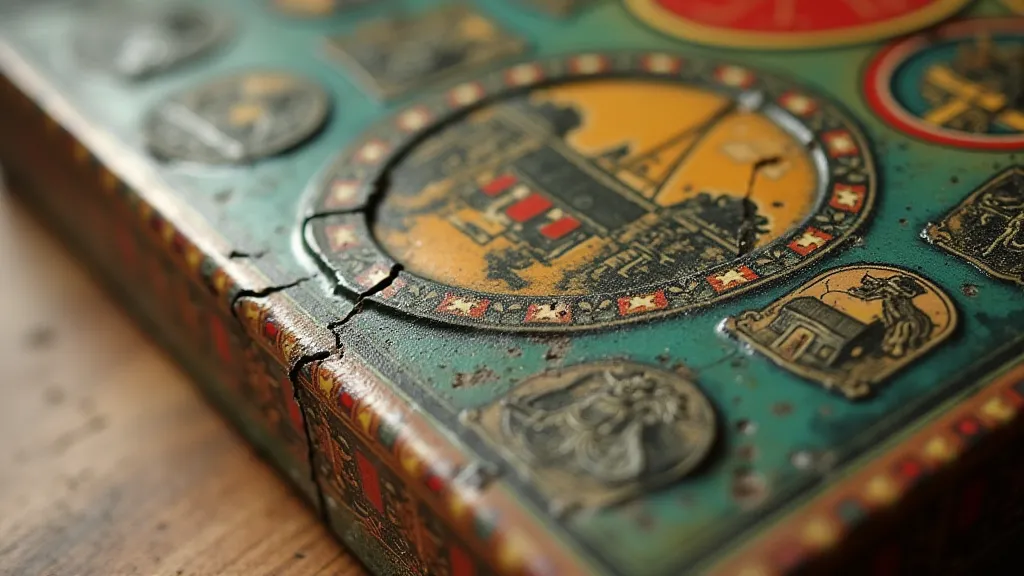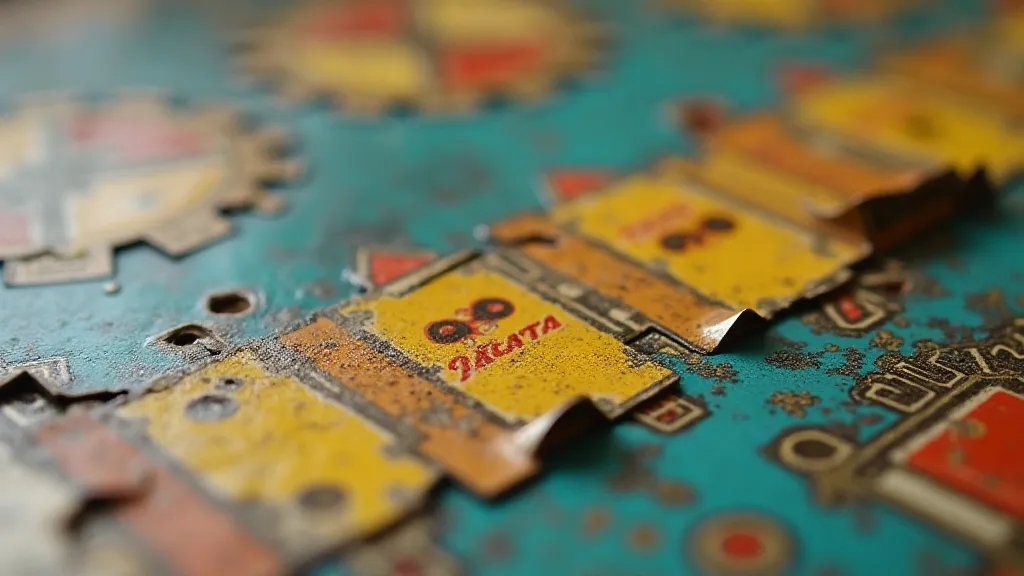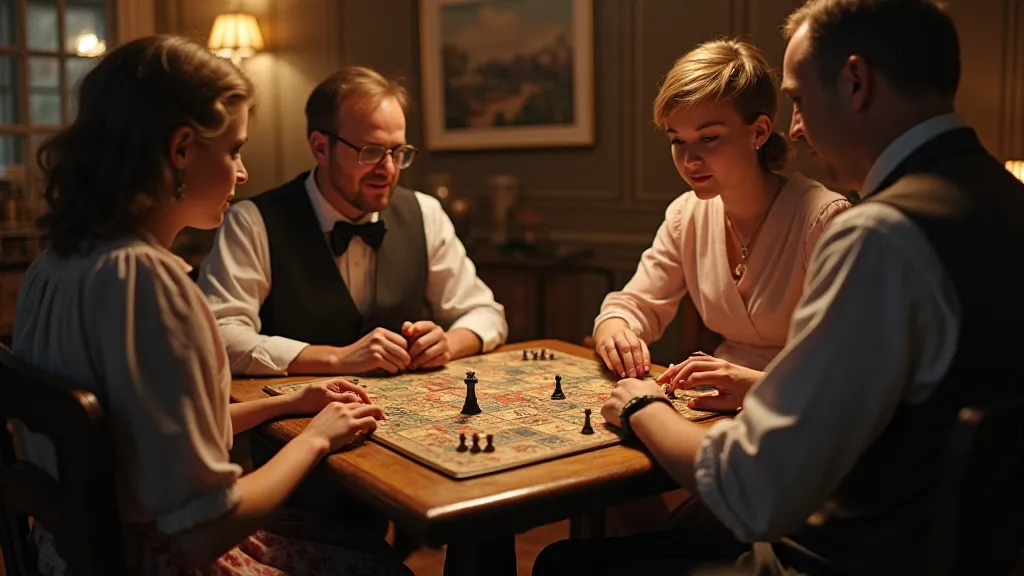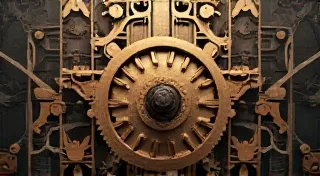Fractured Landscapes: The Ephemeral Nature of Tinplate Board Games
There's a particular scent associated with old things – a blend of dust, aged paper, and sometimes, a faint, sweet aroma of oxidized metal. It's a smell that evokes memory, that whispers of forgotten moments and vanished worlds. For those of us drawn to vintage board games, especially those crafted from tinplate, it’s a siren song, pulling us back to childhood and beyond. But these aren’t just nostalgic relics; they are fragile landscapes, intricate constructions built on a foundation of increasingly vulnerable materials, demanding a deeper understanding and appreciation for their preservation.
My own journey into the world of collectible board games began with a chipped copy of "The Mansion of Happiness," a Victorian-era morality game. It wasn’s the game itself that captivated me initially. It was the tinplate cover, beautifully embossed with scenes of pastoral bliss, despite the obvious wear. Examining it under a light, I noticed the subtle ripple of the metal, the faint impression of the original embossing die, the way the paint had crazed and cracked, revealing the grey of the tin underneath. It felt…alive, in a way that modern, mass-produced games simply aren’t.

The Allure of Tinplate and the Dawn of Family Entertainment
The late 19th and early 20th centuries witnessed a significant shift in leisure activities. As industrialization brought about greater prosperity and more free time, families began seeking alternatives to traditional forms of entertainment. Board games, particularly those utilizing the relatively new material – tinplate – became immensely popular. Tinplate, thin sheets of iron or steel coated with tin, offered a unique combination of durability and affordability. It could be easily embossed and lithographed, allowing for elaborate artwork and engaging designs. The very nature of these games fostered a sense of connection, reflecting a broader cultural shift toward family-centered leisure, a subject often explored when considering the weight of inheritance and the passing down of cherished collections across generations.
Companies like Parker Brothers, Milton Bradley, and Ravensburger (though in its infancy then) pioneered this burgeoning industry. The games they produced weren’t simply pastimes; they were miniature worlds, intricately crafted to transport families on fantastical adventures. Imagine the meticulous work involved: the die-cutting of the tinplate, the skilled lithographers recreating vibrant images, the careful creation of playing pieces, and the creation of rules designed to both entertain and subtly impart moral lessons. Each game represented countless hours of labor, a testament to the craftsmanship of the era.
The Enemy Within: Understanding Material Degradation
The very qualities that made tinplate appealing – its affordability and malleability – also contribute to its fragility. Unlike modern plastics, tinplate is susceptible to a range of degradation processes. Oxidation, or rusting, is perhaps the most obvious threat. Moisture, even humidity in the air, accelerates this process, leading to the formation of reddish-brown oxides on the surface of the metal. This is especially problematic in areas with high salinity or industrial pollution.
Lithography, the printing process used to decorate tinplate games, also presents challenges. The inks used were often oil-based and prone to fading and cracking over time. The thin layer of varnish applied to protect the image is equally vulnerable, often deteriorating and leaving the artwork exposed to the elements. Furthermore, the glue used to assemble the game boxes and components often becomes brittle and degrades, causing the game to fall apart. The tinplate itself, though strong, can bend and warp, particularly around the edges and corners.

Conservation Challenges and Practical Considerations
Preserving vintage tinplate board games is a delicate balancing act. Aggressive cleaning and restoration attempts can often do more harm than good. The goal isn’t to return the game to a pristine, “new” condition; it’s to stabilize its current state and prevent further deterioration. A careful assessment is essential before undertaking any conservation work. The appeal of these games, and the desire to understand the context of their creation, often leads to deeper explorations of the Victorian mindset and the role of strategy and chance—a fascinating look into the clockwork heart of risk and the Victorian approach to entertainment.
Controlling the environment is paramount. Storing games in cool, dry places, away from direct sunlight and excessive humidity, is the simplest and most effective preventative measure. Enclosing games in archival-quality boxes or folders can also provide an additional layer of protection. Gentle dusting with a soft brush can remove surface dirt and debris, but abrasive cleaning methods should be avoided at all costs.
Addressing rust requires a cautious approach. Surface rust can sometimes be removed with a mild solvent, but care must be taken to avoid damaging the lithographic artwork. More severe corrosion may require the expertise of a professional conservator. Repairing damaged game boards and components often involves the use of archival-quality adhesives and patching materials. The focus should always be on reversibility – ensuring that any repairs can be undone without causing further damage.
Beyond the Game: A Window into the Past
Collecting vintage tinplate board games isn’t merely about acquiring beautiful objects; it's about connecting with the past. Each game is a tangible link to a bygone era, offering insights into the social, cultural, and technological landscape of the time. They were more than just entertainment; they were tools for education, for family bonding, and for shaping societal values.
Imagine a family gathered around a table, laughing and competing in a game of "Don't Spoil Your Vacation," a game that playfully mocked the mishaps of early tourism. Or a child learning the virtues of honesty and perseverance through "The Checkered Game of Life." These games offer a glimpse into the aspirations, anxieties, and humor of previous generations. Understanding these shared experiences and the enduring legacy of these games necessitates exploring the larger picture of how play evolved—a journey frequently revisited when considering echoes of play and the stories they whisper about those who came before us.

A Legacy of Tin and Memories
The future of these fragile landscapes rests in the hands of collectors and enthusiasts who appreciate their historical significance and are committed to their preservation. It requires a shift in perspective – from viewing them as mere commodities to recognizing them as invaluable cultural artifacts. By understanding the challenges of material degradation and adopting responsible conservation practices, we can ensure that these captivating windows into the past continue to enchant and inspire generations to come. The whisper of those bygone moments, held captive within the tinplate, deserves to be heard. Examining the stories these games tell also illuminates the importance of shared experiences and the ways in which they can create a sense of community—a vital element frequently discussed when considering the beyond the rules and the power of games to foster connection and belonging.




